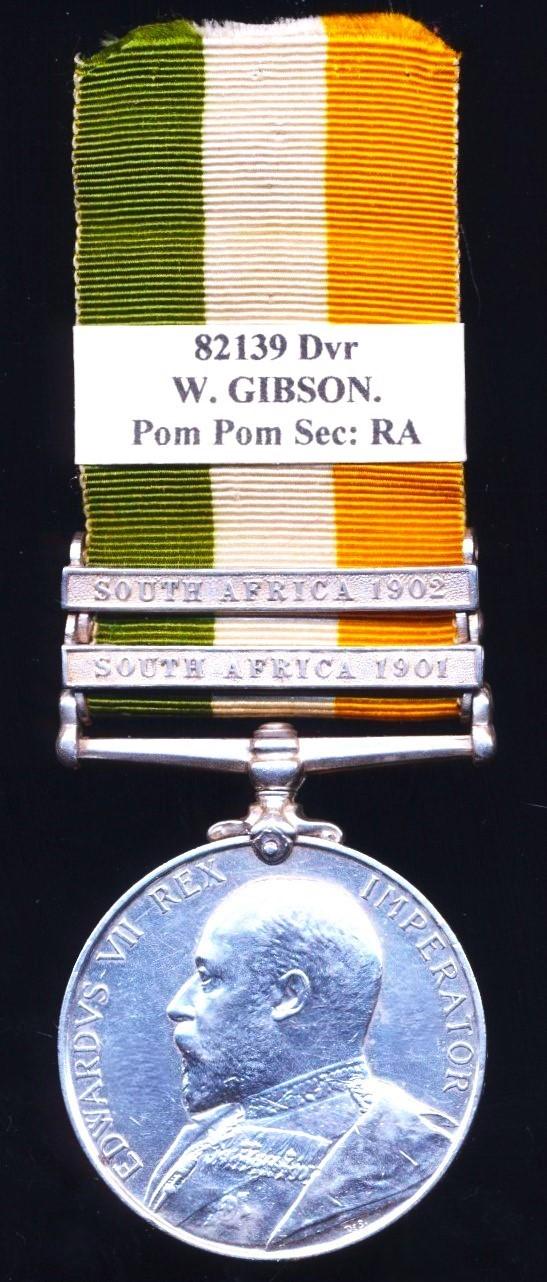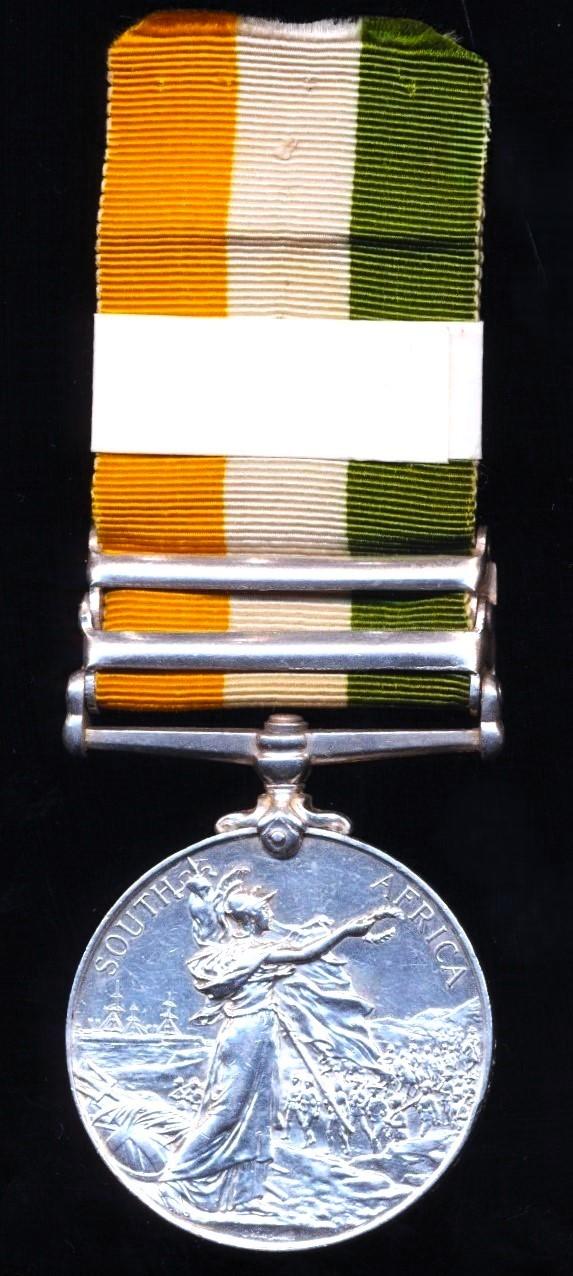King’s South Africa Medal 1901-02. With 2 x clasps 'South Africa 1901' & 'South Africa 1902' (82139 Dvr: W. Gibson. Pom Poms Sec: R.A.)
Medal(s) and clasps verification: The medal with both clasps to Driver Gibson, is confirmed per the respective campaign medal roll. In addition he was also awarded the Queen's South Africa Medal with 4 x clasps ‘Cape Colony’, ‘Orange Free State’, ‘Transvaal’ and ‘Rhodesia’. The respective campaign medal roll references are cited below:
- QSA Medal & 4 x clasps: Ref WO 100/144 medal roll of H.H. Section Pom Poms Royal Horse Artillery, compiled & signed at Vryburg, South Africa, 6 July 1902
- KSA Medal & 4 x clasps: Ref WO 100/144 medal roll of H. H. Section Pom Poms Royal Regiment of Artillery, compiled & signed at Limmerick, Ireland, on, 21 July 1903
The Q.S.A. roll states that he landed in South Africa in April 1900. The K.S.A. roll states that he served with the 1st 1pdr. Maxim Battery R.F.F. (Rhodesian Field Force), and that he returned home to the United Kingdom on S.S. Maplemore on. 7 August 1902
Pom Poms: The first gun to be called a pom-pom was the 37 mm Nordenfelt-Maxim or "QF 1-pounder" introduced during the South African War 1899-1902. Only 50 x 'Pom-Poms' were sent to the British Army in South Africa, and they were the smallest artillery piece of that war. They fired a shell 1 lb (0.45 kg) in weight accurately over a distance of 3,000 yd (1.7 mi; 2.7 km). The barrel was water-cooled, and the shells were belt-fed from a 25-round fabric belt. This "auto cannon" fired explosive rounds (smokeless ammunition) at 450 rounds per minute
The recipient's service papers are extant and accessible at The National Archives
A scarce seen and interesting Artillery unit
Condition: About GVF
Code: 23932







